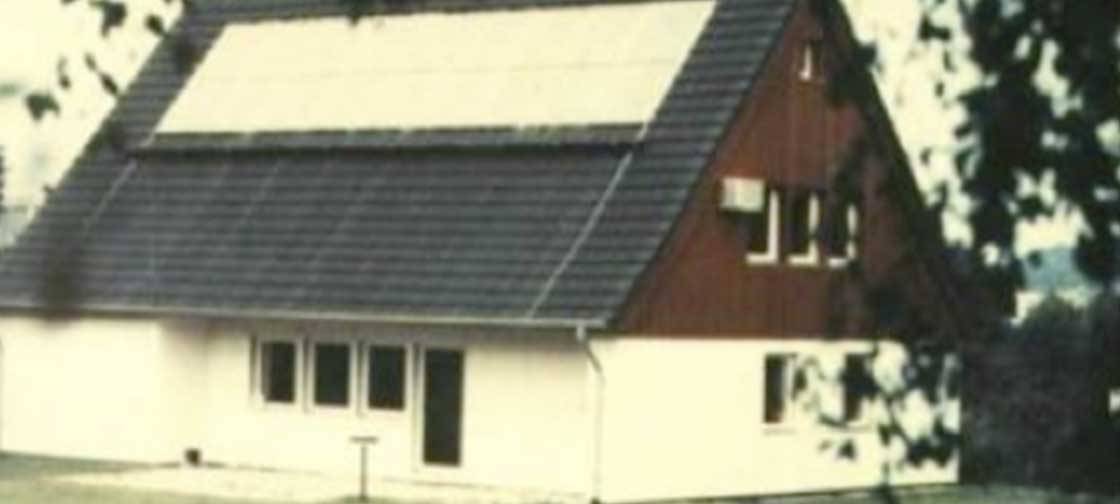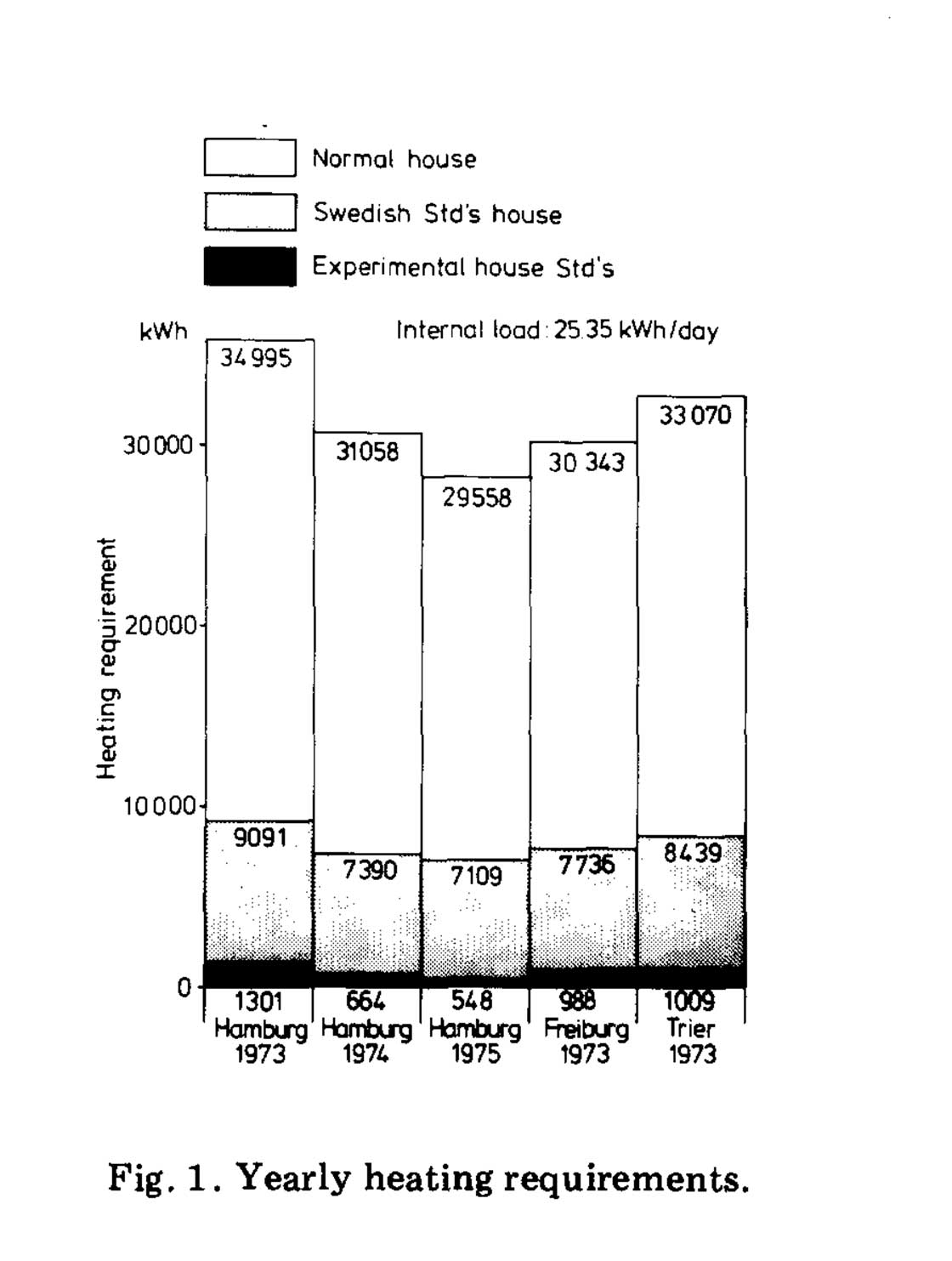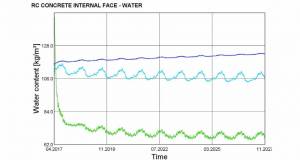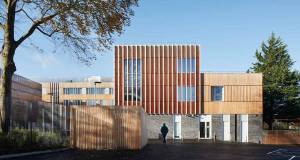
- Blogs
- Posted
A precursor to the passive house
This article was originally published in issue 36 of Passive House Plus magazine. Want immediate access to all back issues and exclusive extra content? Click here to subscribe for as little as €10, or click here to receive the next issue free of charge
We all have an innate understanding of the principle of passive first, but where did this come from? Almost 50 years ago a project by Philips in 1974 in Germany set the basis for passive house solutions in 2020. Philips built a computer controlled, super-insulated experimental house to explore the potential of low temperature output heat pumps to deliver space heating. The researchers, Bruno, Hörster and Steinmüller soon discovered that their passive actions were more cost optimal than the active solutions.
They needed to reduce the potential heat demand of the ‘Experimental House‘ to make the heat pump viable. They super-insulated the 147 m2 study building with elemental fabric standards of 0.17 W/m2K for walls, roof, and floor. This was compared to German and Swedish standard constructions where 1.12 W/m2K and 0.37 W/m2K were the fabric standards for walls respectively.
The Experimental House had a startlingly low heat demand, comparable to A-rated houses today, and all in the absence of triple glazing, airtightness and thermal bridging knowledge. The passive measures reduced the heat demand to less than 13 per cent of a normal German house or 800 kWh per year (see figure 1). They then met this remaining demand with renewable systems such a 90 per cent efficient heat recovery ventilation system, a heat pump soil heat exchanger in the basement and an experimental solar vacuum collector on the roof.
The Experimental House had a startlingly low heat demand
Whilst the researchers would not realise that the computer might not accurately project the counter-effective impact of human occupant behaviour, they did manage to model internal heat loads and the effect of opening windows.
A series of other research findings since, have found that occupants of low energy houses are more carefree about heating, more likely to turn the thermostat up, leave the windows open or forget to close the shutters at night. Some researchers have even found that dwellings designed and equipped to be low energy can in fact be comparatively less efficient than higher energy consumption buildings because of human behaviour (Dugar 2019).
The Experimental House researchers did find that in almost all of the cases the contribution of ambient air infiltration, which can result from opening windows, had a “negligible” impact on heat demand. One of the findings that fascinated me was their measurement of heat gains from passive solar gain, plus building occupants and equipment: “20,000 kWh yearly energy gains (10,800 kWh from solar radiation, 9,250 kWh internal load)”.
These gains plus the output of the heat pumps are enough to meet space heating demand in the Experimental House. Something I managed to grasp easily is the reported average heating demands which were 6 kW, 1.9 kW and 0.5 kW for the German, Swedish and Experimental Houses respectively. If you’re used to going out and buying a stove or heat pump this should give you a good sense of the scale and size of heating system required in these 1974 houses. That’s kind of mind blowing when you think it’s nearly 50 years ago.
The team also conducted fascinating research on the heat demand reduction of a number of options on a normal German house, with insulated shutters on external windows resulting in a 16 per cent reduction and double glazed windows over single glazed resulting in a 13 per cent reduction.
They also found that increasing window sizes on the south facade would not result in enough solar heat gain to offset the heat lost through the windows, even when windows with insulated shutters and an overall (night time) U-value of 0.6 W/m2K are modelled, when compared to the 0.17 W/m2K walls. Maybe there is a lesson for us all there.

The overall findings, far from being a disaster for Philips, showed that the reduced heat demand made the low-level thermal capacity of their heat pump a feasible alternative to oil, gas or solid fuel.
This article heavily depended on the firsthand research of Dr Bernard Steinmüller and his excellent 1979 article ‘The Energy Requirements of Buildings’. Reflecting on that paper, Steinmüller told the 2019 International Passive House Conference: “It turned out that in most climates, measures that focus on the ‘passive’ side of the building - especially the largely “passive” building envelope and its heat losses or gains - tackle the problem at its root and are much more effective than measures on the ‘active’ side.”
Many thanks to CIT librarian Noreen O’Neill for finding Dr Steinmüller’s original article. In my next article we will be looking back to the States and the Lo-Cal House in the mid 1970s.
Related items
-
 Do your walls behave like a Jaffa Cake?
Do your walls behave like a Jaffa Cake? -
 Basements in low energy buildings - key issues to avoid moisture and heating problems
Basements in low energy buildings - key issues to avoid moisture and heating problems -
 Breathing room - why it's time to get serious about ventilation
Breathing room - why it's time to get serious about ventilation -
 Up with the lark
Up with the lark -
 Inside the UK’s largest passive school
Inside the UK’s largest passive school -
 Prestige Aluclad supplying passive Viking windows nationwide
Prestige Aluclad supplying passive Viking windows nationwide

